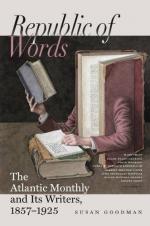The reviver of gymnastics was PETER HENRY LING. Born of humble parentage, and contending in his earlier years with the extremest poverty, he completed a theological education, became a tutor, volunteered in the Danish navy, travelled in France and England, and began his career of gymnast as a fencing-master in Stockholm. He died a professor, a knight, and a member of the Swedish Academy, and was posthumously honored as a benefactor of his country.
While fencing, he was struck with the wholesome effects which may be produced on the body by a rational system of movements, and this suggested the idea which he developed by practice and precept through his entire life. It was, that “an harmonious organic development of the body and of its powers and capabilities by exercises ought to constitute an essential part in the general education of a people.” Ling thought not of merely imitating the gymnastics of the ancients, but he aimed at their reformation and improvement. Wishing to put gymnastics in harmony with Nature, he studied anatomy, physiology, and the natural sciences. Of their value in directing rational exercise he says: “Anatomy, that sacred genesis, which shows us the masterpiece of the Creator, and which teaches us how little and how great man is, ought to form the constant study of the gymnast. But we ought not to consider the organs of the body as the lifeless forms of a mechanical mass, but as the living, active instruments of the soul.” And even this is not sufficient; “for the gymnast, the ultimate aim of whose art is the beau ideal of humanity, must know what effects applied movements produce upon the corporeal and psychical condition of man; a knowledge which can be obtained only from the most careful and untiring examination.”
It has been asserted, that, in pursuance of this plan, Ling invented a separate movement or exercise for every muscle in the body. This is not strictly true, for it is practically impossible. Few muscles act alone, and such as do are developed symmetrically, and are antagonized by those of the opposite side. Most movements are performed by groups of muscles. The cripple, swinging on his crutches, develops the broad sheet of muscular fibres which enfolds the back and loins, and approaches in form the simian tribe, the business of whose life is climbing. The sledge-hammer brings out the biceps of the blacksmith, and striking out from the shoulder the triceps of the pugilist. The calves of the ballet-dancer




